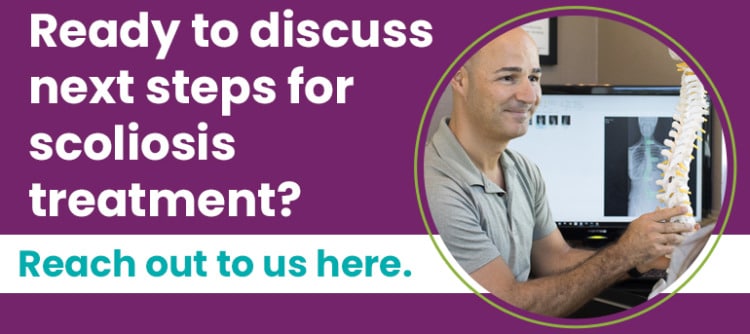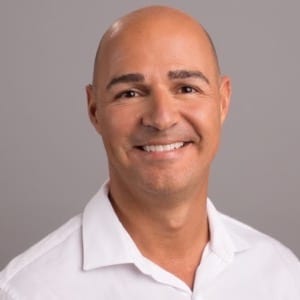Puerto Rico Scoliosis Treatment: Non-Surgical Solutions
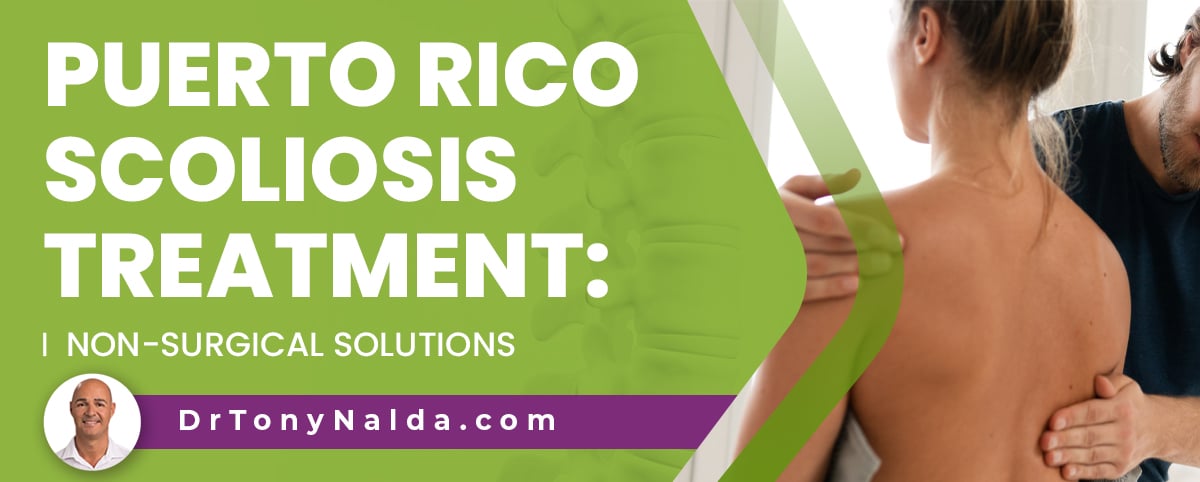
When it comes to treatment options for scoliosis, it's important to understand the pros and cons of both a surgical and non surgical scoliosis treatment approach; scoliosis treatment will shape the spine's long-term health, so it's an important choice that should be informed.
As a progressive condition, effective and innovative scoliosis treatment can be worth traveling for. For Puerto Rico residents, a 4-hour flight can mean access to a leader in non surgical scoliosis treatment: Dr. Tony Nalda's Scoliosis Reduction Center®.
Scoliosis is diagnosed through a physical examination and X-ray results; let's start with the guidelines that have to be met to reach a scoliosis diagnosis.
Table of Contents
What is Scoliosis?
There are a number of spinal deformities that involve a loss of the spine's healthy curves, but scoliosis has some characteristics that set it apart.
Scoliosis causes the spine to bend unnaturally to the side and rotate, making it a complex 3-dimensional condition.
An X-ray is needed to conform the rotational component and a patient's Cobb angle; a minimum Cobb angle of 10 degrees is needed to be considered a true scoliosis.
A patient's Cobb angle is known as the gold standard in the assessment of scoliosis; it's determined during X-ray by drawing lines from the tops and bottoms of the curve's most-tilted vertebrae at its apex, and the resulting angle is expressed in degrees.
Condition severity is based on the Cobb angle, so the more unnaturally tilted the vertebrae are, the further out of alignment the spine is, and the more severe the condition:
Mild scoliosis is diagnosed at between 10 and 25 degrees
Moderate scoliosis is diagnosed with Cobb angles of between 25 and 40 degrees
Severe scoliosis involves measurements of 40+ degrees, and very severe scoliosis is diagnosed at 80+ degrees
So scoliosis is a progressive structural spinal deformity that causes the spine to bend and twist unnaturally, and it can range widely in severity.
The more severe a condition, the more noticeable its effects are likely to be.
Scoliosis Effects in Children
Scoliosis effects can become worse over time as the condition progresses.
Scoliosis progressing means the size of the unnatural spinal curve is increasing, as are its effects.
As the spine gives the body structure, an unnaturally-curved spine is introducing a lot of uneven forces, and those forces can disrupt the body's overall symmetry by causing postural changes.
As a progressive condition triggered by growth, children are the most at risk for rapid progression, and the main symptom of childhood scoliosis is postural deviation:
- An uneven eyeline
- Head appearing uncentered over the torso
- Uneven shoulders
- Uneven shoulder blades
- The development of a rib cage arch
- An uneven waistline
- Uneven hips
- Arms and legs not hanging evenly
As the body's center of gravity is disrupted, changes to movement are also common including gait, balance, and coordination.
While postural changes are the main symptoms that lead to a diagnosis of scoliosis in children, it's pain that brings most adults in for assessment, diagnosis, and treatment.
Scoliosis Pain
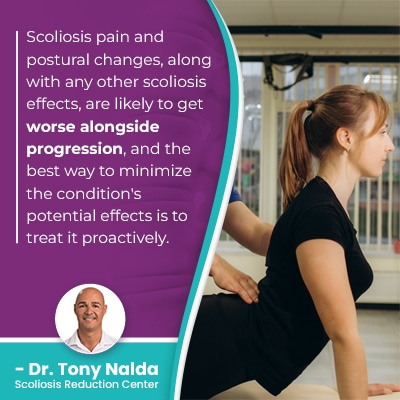 Scoliosis generally becomes painful once skeletal maturity has been reached, when scoliosis becomes a compressive condition.
Scoliosis generally becomes painful once skeletal maturity has been reached, when scoliosis becomes a compressive condition.
Scoliosis pain can involve the muscles, back, and pain that radiates into the extremities because of compressed nerves.
Growing spines are undergoing a constant lengthening motion that counteracts the compressive force of the unnatural spinal curve, which is why pain isn't considered a common symptom of childhood scoliosis.
Pain is the main reason adult scoliosis is diagnosed; in fact, the most common type of scoliosis to affect adults is idiopathic scoliosis, and these cases involve adolescents that had adolescent idiopathic scoliosis but were unaware.
It's a common scenario that adolescents don't receive a diagnosis and treatment during adolescence because the condition's signs can be subtle, but when skeletal maturity is reached and conditions become painful, their effects are more noticeable.
Scoliosis pain and postural changes, along with any other scoliosis effects, are likely to get worse alongside progression, and the best way to minimize the condition's potential effects is to treat it proactively.
Orlando, Florida Scoliosis Treatment
Here at Orlando, Florida's Scoliosis Reduction Center®, Puerto Rico scoliosis treatment can be integrative, innovative, and proactive.
Scoliosis becomes more complex to treat the more it progresses; progression makes the spine increasingly rigid and less responsive to treatment, and a rigid spine can be less able to perform key therapeutic exercises as part of treatment.
A proactive approach is beneficial because it's started as close to the time of diagnosis as possible, when a case is going to be at its mildest and most responsive.
In most cases, it's more effective to work towards preventing increasing condition effects than attempting to reverse once they're established.
What's unique about the Center is its integrative approach. Being trained and certified in multiple types of treatment means I can fully customize treatment plans, and once a patient of the Center, having access to multiple different treatments under one roof can be convenient and beneficial.
Non surgical scoliosis treatment is less invasive and risky and is chiropractic-centered.
Chiropractic Care: Spinal Structure
The underlying nature of scoliosis is structural, so to impact it with treatment, the structural abnormality within the spine has to be improved, and this is worked towards through chiropractic care and a curvature reduction.
Chiropractic care can involve a series of techniques and manual adjustments capable of adjusting the position of the curve's most-tilted vertebrae, at its apex, and improving the spine's alignment and restoring as much of its healthy curve as possible.
Reducing the size of the unnatural spinal curve on a structural level isn't enough; the spine also needs its support and stability improved to hold structural changes.
Physical Therapy and Scoliosis Exercises
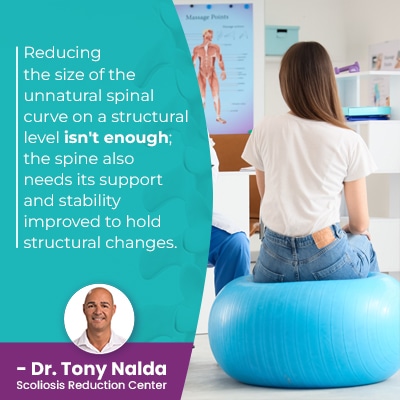 Another key facet of a conservative treatment approach uses the power of exercise and movement to improve the spine's surrounding muscle balance and strength.
Another key facet of a conservative treatment approach uses the power of exercise and movement to improve the spine's surrounding muscle balance and strength.
Improving the strength of the spine's surrounding muscles means a spine that's supported and stabilized, and physical therapy and scoliosis-specific exercises can help support structural changes within the spine achieved through chiropractic treatment.
Scoliosis is also associated with a muscular imbalance as the condition's uneven forces doesn't just affect the spine but also its surrounding muscles and nerves.
As the unnatural spinal curve pulls its surrounding muscles in different directions, the muscles on one side of the spine can become weak from underuse, while the muscles on the other side can become sore and strained due to overuse.
There was a time when the place of exercise in scoliosis treatment was questioned, but we now know that the power of physical therapy to improve a patient's posture, muscle support, spinal stability, and body positioning is key to non surgical scoliosis treatment success.
Bracing and Rehabilitation
When it comes to treating childhood scoliosis, bracing is a regular facet as growing spines are more malleable and responsive to scoliosis bracing.
A corrective brace can help augment corrective treatment results by pushing the spine into a corrective position, and the ScoliBrace is often the Center's brace of choice; it addresses many of the shortcomings associated with traditional braces and can complement other types of treatment.
Rehabilitation is about holding treatment results for the long term; remember, as a progressive condition, scoliosis treatment is more about managing an ongoing condition for the best quality of life.
Rehabilitation can involve continued chiropractic care, guidance on how to lead a scoliosis-friendly lifestyle, and custom-prescribed home exercises for further healing and stabilizing the spine.
Conclusion
Puerto Rico scoliosis treatment can include industry-leading Dr. Tony's Scoliosis Reduction Center®, where results speak for themselves, with a 4-hour flight.
Scheduling a consultation with Dr. Tony can be the first step on the road to an improved quality of life.
A scoliotic spine that's treated proactively with conservative treatment will have as much of its natural strength and function as possible preserved; unlike scoliosis surgery that's known to weaken the spine and disrupt its natural function and range of motion.
Patients need to be aware of all treatment options available to them; while there are never treatment guarantees, early detection and intervention is associated with treatment success.
While spinal fusion surgery is an option for severe, very severe, and atypical cases of scoliosis, the reality is that many cases of scoliosis don't need surgery, and as the risks and potential complications of spinal surgery are very real, the procedure should be considered carefully.
Here at the Center, patients receive personalized care and fully customized treatment options; curve size can be reduced through chiropractic care and the power of physical therapy, bracing, and rehabilitation.
Dr. Tony Nalda
DOCTOR OF CHIROPRACTIC
After receiving an undergraduate degree in psychology and his Doctorate of Chiropractic from Life University, Dr. Nalda settled in Celebration, Florida and proceeded to build one of Central Florida’s most successful chiropractic clinics.
His experience with patients suffering from scoliosis, and the confusion and frustration they faced, led him to seek a specialty in scoliosis care. In 2006 he completed his Intensive Care Certification from CLEAR Institute, a leading scoliosis educational and certification center.
About Dr. Tony Nalda
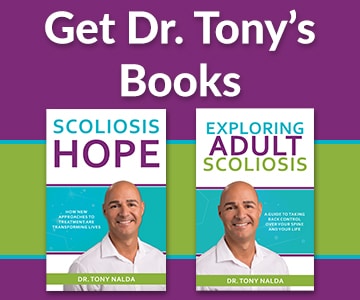 Ready to explore scoliosis treatment? Contact Us Now
Ready to explore scoliosis treatment? Contact Us Now